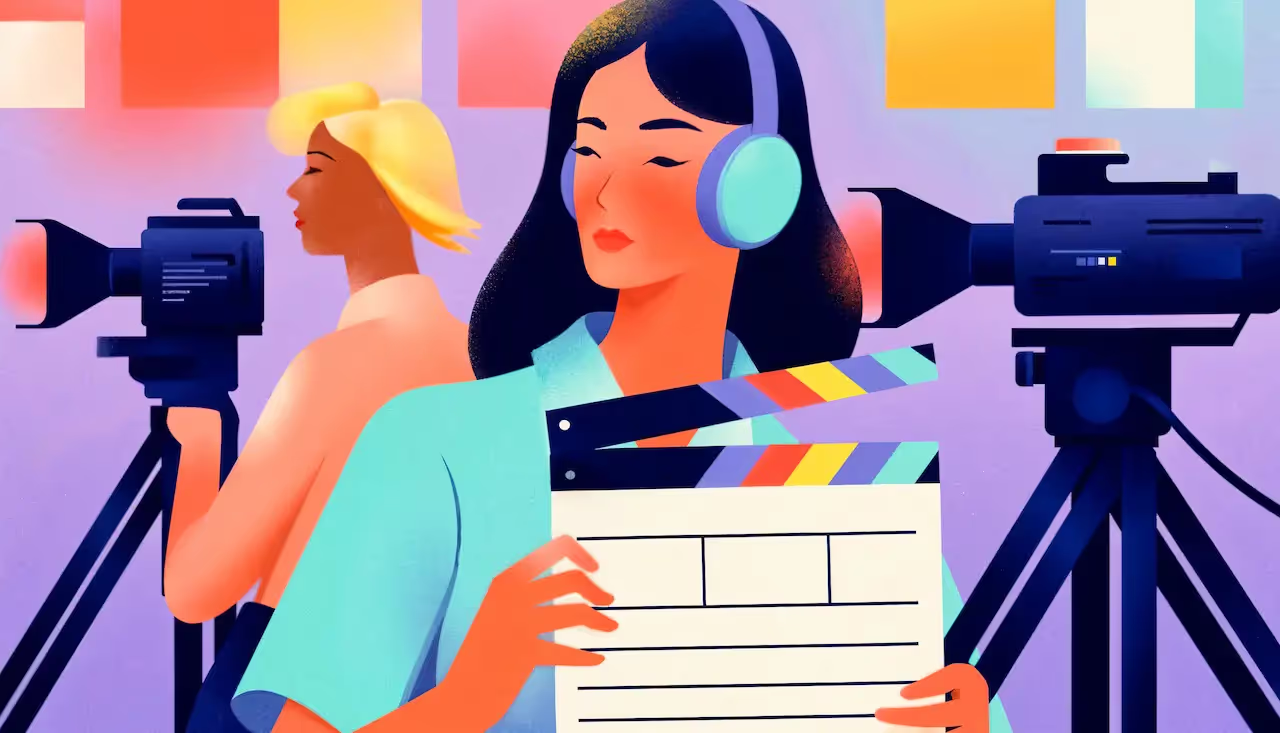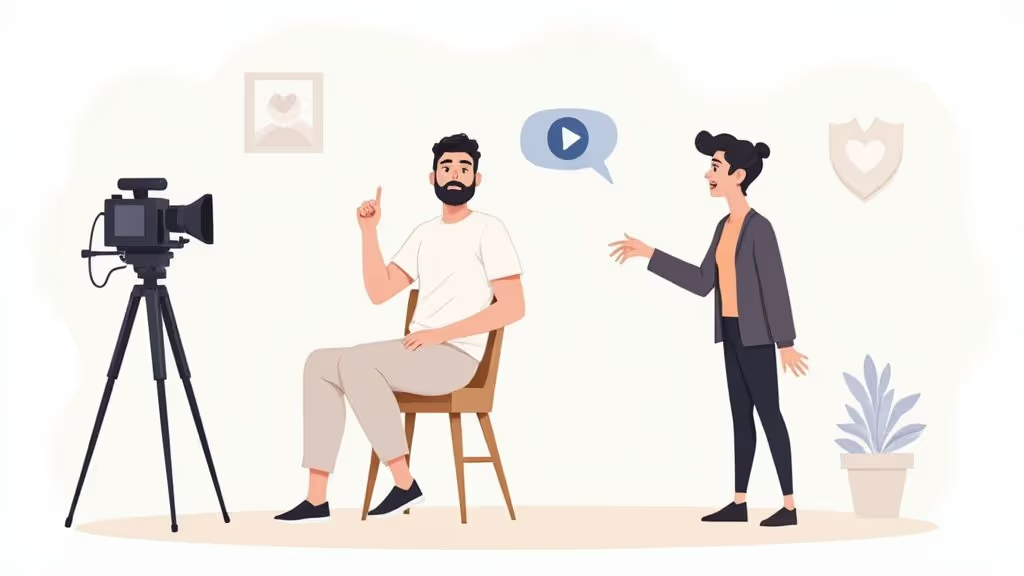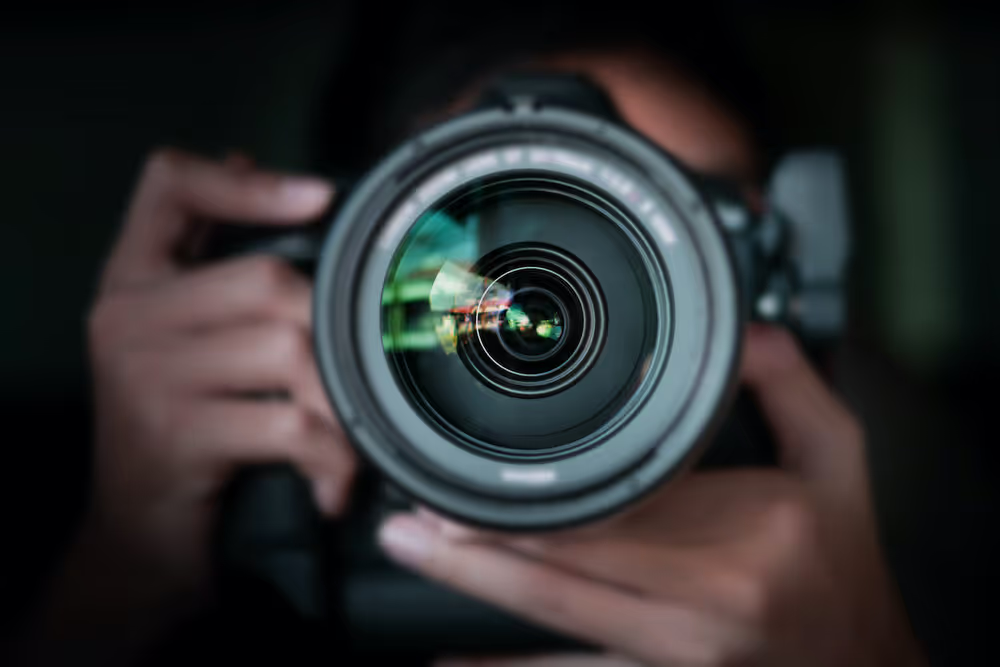Table of Contents
Combining animation with live action video brings together the best of both styles. It gives marketers and content creators more flexibility, more clarity, and a way to connect with viewers both emotionally and visually. This type of hybrid video production is ideal for brand storytelling, product demos, educational content, and social campaigns.
A live action animation blend adds personality, simplifies complex topics, and makes messages easier to remember. At Get Camera Crew, we’ve helped companies use this technique to bring ideas to life through creative animated live shoots that look and feel professional.
Understand the Animation Style First
Not all animation is the same. The style you choose should fit the tone and message of your video.
Frame-by-Frame Animation
This is one of the oldest and most detailed animation styles. Every frame is drawn one by one, giving it a smooth and artistic look. It often feels personal and handmade, which is great for emotional storytelling or creative brand videos. However, because it takes more time and effort to produce, it may not be the best fit for projects with tight deadlines or smaller budgets.
Frame-by-frame animation works well for brands that want a unique, charming, or artistic feel. It’s often used in ads that focus on values, emotions, or storytelling.
Motion Graphics in Live Action
Motion graphics are simple shapes, text, or icons that move on screen. They are often used in corporate videos, explainer content, or educational clips. These animations can show numbers, highlight points, or display steps in a process. When added over live action footage, they help guide the viewer and explain ideas more clearly.
This style is clean, professional, and quick to produce. It’s also budget-friendly and easy to adjust later. Motion graphics are a smart choice when the goal is to inform or teach, especially when the video includes a lot of spoken content or data.
2D Character Animation
2D characters are flat, cartoon-style figures that move and speak. They are perfect for storytelling because they can show personality and emotion. A 2D character can guide the viewer, explain a concept, or even represent your customer or team.
This style adds energy and charm to a video, making it more fun and engaging. It’s great for audiences that enjoy light, friendly visuals, and it works well in marketing, training, or internal communication. 2D character animation takes more planning than motion graphics, but it’s still faster and easier than 3D or frame-by-frame styles.
Decide How Animation Will Interact with Live Action
Once your style is chosen, think about how the animation will appear in the live footage.
Passive Overlay
Passive overlay is when animation is added on top of the video without touching or reacting to the people or objects in the scene. It’s commonly used for text, icons, arrows, or simple graphics that support the message. Since there’s no interaction, it’s easier and faster to produce. This method works well in corporate, educational, and explainer videos, where the goal is to highlight key points or add clarity without distracting from the speaker or product.
Active Interaction
Active interaction is when animated elements appear to connect with people or objects in the video. For example, someone might point at a floating graphic or react to an animated character. This style makes the video feel more lively and creative but requires more planning during filming and editing. It’s often used in brand storytelling, product videos, or social media content where a fun, interactive feel helps keep viewers engaged.
Pre-Production Planning Essentials
Success in a live action animation blend starts with detailed planning before the camera rolls.
Create a Detailed Storyboard
A good storyboard shows what happens in each scene and where animation will appear. It should include notes for both live action shots and animated parts. Mark when and where graphics will show up, how they will move, and whether they interact with people. This helps the whole team understand the flow of the video and makes filming and editing more organized.
Use Tracking Markers
If the actors need to look at or touch something that will be animated later, physical markers should be placed on set. These can be small stickers, colored tape, or simple props. They guide the actors so their eye line or hand movements match the future animation. This step helps the final video look more realistic and avoids confusion during post-production.
Capture Clean Plates
A clean plate is a shot of the background with no people or movement. These are helpful for adding animation later, especially if something needs to appear behind the actor or be added into the space. Clean plates give editors more freedom to position animated elements without background distractions or extra cleanup.
Define Software and Workflow
It’s helpful to decide early which editing and animation tools will be used. Common programs include Adobe After Effects, Toon Boom, and Premiere Pro. When everyone knows the tools and the editing steps, the process goes faster and smoother. It also reduces the chances of file issues or delays during post-production.
Also read: Creative Ways to Use Slow Motion in Brand Videos
Filming with Hybrid in Mind
Filming for an animation live action video needs a few special steps:
Include Visual Markers
When actors need to look at or interact with something that will be animated later, it's helpful to place visual markers on the set. These can be colored tape, small props, or objects placed where the animation will appear. For example, if someone is reaching out to touch an animated button or character, a marker helps them know exactly where to place their hand or eyes. This keeps their actions lined up with the animation and makes the final scene look more believable.
Shoot Multiple Takes
It's a good idea to film each scene several times from different angles. Capture wide shots, medium shots, and close-ups, along with extra footage that might not be used but gives more options later. Having more takes gives the editor flexibility to choose the best version and makes it easier to adjust timing or position when blending animation with live action. It also helps when matching motion or adding effects, since there is more footage to work with.
Record Clean Backgrounds
After filming a scene with actors, shoot the same scene again without anyone in the frame. This is called a clean background or clean plate. It gives the editor a clear view of the setting without people or movement, which is useful when adding animation behind or around live action parts. Clean plates also make it easier to fix small mistakes or adjust animated elements without having to reshoot.

Post-Production Workflow
This is where the live footage and animation are combined into one final video.
Use Green Screens or Keying
When parts of the video need to be replaced with animation or new backgrounds, a green screen is often used. The editor can remove the green color using a method called chroma keying. This allows animated elements or digital backgrounds to be placed behind the person or object. Green screens are especially useful when filming in a small space or when the animated environment needs to be added later.
Rotoscope or Track Movement
Sometimes animation needs to go behind or in front of specific parts of the live footage. In that case, rotoscoping is used. This technique involves cutting out parts of the video frame by frame so that animation can be layered properly. Another helpful method is motion tracking, which follows the movement of a person or object. The animation can then move along with them, making everything feel connected.
Composite with Alpha Layers
To make the animation blend naturally into the live scene, transparent layers called alpha layers are used. These layers help place animated objects or effects in the right spot without covering up important parts of the live footage. It’s a clean way to combine real video with graphics so they feel like part of the same space. This technique is common in professional hybrid video production.
Add Sound Design
Sound is a big part of what makes animation feel real. Even small movements, like a graphic sliding in or an icon appearing, can benefit from subtle sound effects. These might include whooshes, clicks, or pops. Adding matching sound design gives life to the animation and helps the viewer stay engaged. It also helps the animation feel more connected to the real footage, creating a complete experience for the audience.
Benefits for Brand Videos
Mixing live action and animation offers many benefits, especially for marketing, branding, and communication.
Explain Complex Topics Clearly
Some subjects are hard to explain using only live video. Topics like finance, technology, or logistics can involve numbers, steps, or systems that are difficult to show on camera. With animation, you can add clear graphics, charts, and animated characters that guide the viewer through the message. These visuals help break down complex ideas into simple steps, making the content easier to follow and remember. Viewers can understand more in less time when both animation and live action work together.
Highlight Product Features
When showing a product, animation can help point out the most important features. For example, arrows, circles, or highlights can appear on screen to show where to look. Zoom-ins or close-up effects can draw attention to design details or show how something works. This keeps the viewer focused and helps them understand what makes the product special. It’s a smart way to show value without needing to stop or explain everything with words.
Connect Through Storytelling
Storytelling is a big part of building a brand. Animation can bring more emotion, energy, and fun to your video. Animated characters or objects can act out a message or help guide the viewer through a story. When mixed with live action, these elements add personality and help people connect more deeply with what your brand stands for. It creates a warm, memorable feeling that lasts beyond the video.
What to Avoid in Hybrid Video Production
Combining two styles takes care. Avoid these common issues:
Too Many Visual Elements
One of the biggest problems in hybrid videos is using too many animations on the screen at once. If the viewer sees moving text, icons, effects, and live action all at the same time, it can become hard to focus. Crowded scenes make it difficult to understand the message. To avoid this, use animation only when it adds real value. Keep the screen clean and make sure every element has a clear purpose. This helps the viewer stay focused and enjoy the video.
Mixed Animation Styles
Using more than one type of animation in the same video can create a style clash. For example, combining 2D characters with 3D graphics or hand-drawn elements may make the video look inconsistent. This can distract viewers and weaken the overall message. Try to stick with one animation style throughout the video so everything feels like part of the same story. A consistent look helps your brand appear more polished and trustworthy.
Forgetting Sound Effects
Animation is not just about visuals. Without sound, even well-designed animation can feel dull or disconnected. Each animated movement should have a small sound effect, like a click, pop, or whoosh, to match the action. These sounds make the animation feel more real and engaging. They also help guide the viewer’s attention and make the video feel complete. Skipping this step can make the animation feel flat or unfinished.
Also read: How to Build a Video Production Brief That Gets Results
People Also Ask
How do you combine animation and live action?
You film live footage and then add animation in post-production. This can include overlays, interactions, or effects using tools like After Effects.
What tools are needed for hybrid video production?
Common tools include Adobe After Effects, Toon Boom, Blender, and Premiere Pro. These help with animation, editing, and compositing.
How long does mixing animation take?
It depends on the style and complexity. Simple overlays may take a few days, while interactive or character-driven animation could take several weeks.
Is green screen always necessary?
No. Green screens help when replacing the background or placing animation behind people. But for simple overlays, they are not always required.
Wrapping Up
Using animation and live action together can make videos more engaging, more clear, and more memorable. When planned well, this blend makes your message stronger and your brand more interesting. With the right team and tools, hybrid video production becomes a smart way to stand out.
Interested in hybrid videos that capture attention and drive results? Partner with Get Camera Crew to plan, shoot, and produce animation and live action content that stands out and delivers.






